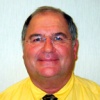What is Kinesiology?
Kinesiology (pronounced kin-easy-ology) is a science that investigates and analyzes human motion. However, when we use kinesiology in the contexts described here, it has a different meaning.
Kinesiology uses the body’s own biofeedback system, via muscle testing, to promote health. The aim is to restore balance, either to the body as a whole or to areas related to one’s specific difficulty, and to restore wellness on a physical, emotional and spiritual level. Multi-dimensional healing uses kinesiology to target brain areas that can be involved in a wide variety of difficulties. These include learning, memory, attention or emotional difficulties, allergies, post-traumatic stress, head injury, depression, anxiety or specific situational stress problems such as reactions to a specific relationship, loss of a job, or illness.
The origin of contemporary applied kinesiology is traced to 1964 when George G. Goodheart Jr., D.C., first observed that in the absence of an anomaly, postural distortion is often associated with muscles that fail to meet the demands of muscle tests. He observed that tender nodules were frequently palpable within the origin and/ or insertion of the tested muscle. Digital manipulation of these areas of apparent muscle dysfunction improved both postural balance and the outcome of manual muscle tests.
It was my privilege as a student to attend the early seminars of Dr. George Goodheart. Eager to learn at our young ages, we listened to every word. Dr. Goodheart stated, “Learn how to observe your patients and listen, for they are your authority in seeking diagnosis. For example – witness how a man will reach to you. Are his palms open to greet you or closed in possible defiance? When a man stands, check his hip height, shoulder level, head level, etc.” He stated that in his many studies he found a man that stood straight with a level head most often exerted common sense.
Goodheart and others have observed that many conservative treatment methods improve neuromuscular function by manual muscle testing. These treatment methods have become the fundamental applied kinesiology approach to therapy. Included in the applied kinesiology approach are specific joint manipulation or mobilization, various myofascial therapies, cranial techniques, meridian therapy, clinical nutrition, dietary management and reflex procedures. Although many treatment techniques incorporated into applied kinesiology were pre-existing, many new methods have been developed within the discipline itself.
Applied kinesiology interactive assessment procedures represent a form of functional biomechanical and functional neurologic evaluation. The term functional biomechanics refers to the clinical assessment of posture, organized motion such as gait, and ranges of motion. When assessing a patient’s status, it is important to understand any pathologic states that may be present prior to instituting a form of therapy for what appear to be functional health problems.
An applied kinesiology-based examination and therapy are of great value for managing common functional health problems, especially when used in conjunction with clinical history, physical and laboratory examination. IBI
Kinesiology uses the body’s own biofeedback system, via muscle testing, to promote health. The aim is to restore balance, either to the body as a whole or to areas related to one’s specific difficulty, and to restore wellness on a physical, emotional and spiritual level. Multi-dimensional healing uses kinesiology to target brain areas that can be involved in a wide variety of difficulties. These include learning, memory, attention or emotional difficulties, allergies, post-traumatic stress, head injury, depression, anxiety or specific situational stress problems such as reactions to a specific relationship, loss of a job, or illness.
The origin of contemporary applied kinesiology is traced to 1964 when George G. Goodheart Jr., D.C., first observed that in the absence of an anomaly, postural distortion is often associated with muscles that fail to meet the demands of muscle tests. He observed that tender nodules were frequently palpable within the origin and/ or insertion of the tested muscle. Digital manipulation of these areas of apparent muscle dysfunction improved both postural balance and the outcome of manual muscle tests.
It was my privilege as a student to attend the early seminars of Dr. George Goodheart. Eager to learn at our young ages, we listened to every word. Dr. Goodheart stated, “Learn how to observe your patients and listen, for they are your authority in seeking diagnosis. For example – witness how a man will reach to you. Are his palms open to greet you or closed in possible defiance? When a man stands, check his hip height, shoulder level, head level, etc.” He stated that in his many studies he found a man that stood straight with a level head most often exerted common sense.
Goodheart and others have observed that many conservative treatment methods improve neuromuscular function by manual muscle testing. These treatment methods have become the fundamental applied kinesiology approach to therapy. Included in the applied kinesiology approach are specific joint manipulation or mobilization, various myofascial therapies, cranial techniques, meridian therapy, clinical nutrition, dietary management and reflex procedures. Although many treatment techniques incorporated into applied kinesiology were pre-existing, many new methods have been developed within the discipline itself.
Applied kinesiology interactive assessment procedures represent a form of functional biomechanical and functional neurologic evaluation. The term functional biomechanics refers to the clinical assessment of posture, organized motion such as gait, and ranges of motion. When assessing a patient’s status, it is important to understand any pathologic states that may be present prior to instituting a form of therapy for what appear to be functional health problems.
An applied kinesiology-based examination and therapy are of great value for managing common functional health problems, especially when used in conjunction with clinical history, physical and laboratory examination. IBI

